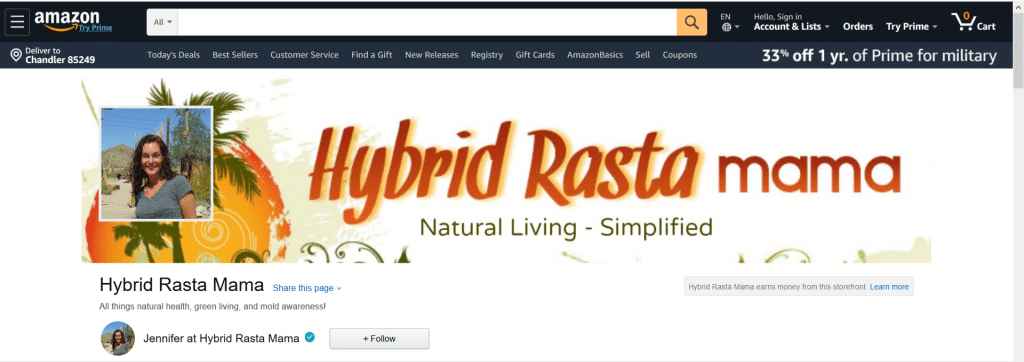Middle ear infection, or otitis media, is one of the most common childhood afflictions, impacting up to 90 percent of children at least once before the age of 10.1 In most cases, ear infections clear up easily on their own and pose little long-term consequences.
But in some children, the infections become chronic, which may describe an ear infection that does not heal or recurring ear infections in a short period of time. This can cause temporary hearing loss, which also potentially poses a risk to speech development.
It is this latter concern that often prompts physicians to recommend ear tubes for the child, but research regarding its effectiveness suggests the long-term benefits of this surgery may be negligible, or even non-existent.
Because there’s so much confusion in conventional medicine on how to best support ear infections, I wanted to highlight what some of the most recent research suggests works best… as well as offer proven natural remedies as well. But first, a bit of background about the different types of ear infections and their potential complications.

What Causes Ear Infections and Signs Of Ear Infection
If your child has pain, redness, or pus in their ear, along with a fever, these are signs of acute ear infection, which may be caused by either bacteria or viruses. In some cases, antibiotics may be useful for treating these infections, but not always (more on this shortly).
A second type of ear infection is called otitis media with effusion (OME), and it’s this type that often prompts the recommendation for ear tubes. Unlike acute ear infections, otitis media with effusion usually causes no pain; its primary symptom is the buildup of fluid in the middle ear.
OME is often caused by viral upper respiratory infections, such as colds. Just as your child gets a runny nose, the middle ear may fill with fluid, but it is unable to drain easily as it does from the nose. The fluid may become infected and may remain in the middle ear for a month or more, leading to problems with hearing.
While OME typically goes away on its own, concern has been raised that the temporary hearing loss it causes could pose a risk to young children’s emerging speech, causing developmental delays.
This is why physicians may advise a surgical procedure to put tubes in your child’s ears to help drain away the fluid. New research suggests, however, that this may have little impact on long-term speech, raising doubts over its benefits.
No Evidence That Ear Tubes Improve Longer Term Hearing
In a review of 41 studies, researchers did find that placing ear tubes (known clinically as myringotomy) reduced time with OME and improved hearing in the short-term.2 However, this did not translate into a long-term benefit, as in time no difference was found developmentally among children who received the surgical procedure or were monitored with watchful waiting. According to the authors:
Tubes and watchful waiting did not differ in language, cognitive, or academic outcomes.”
In addition to finding no evidence of long-term benefit, the authors noted that side effects were common, including ear discharge or drainage and calcification of tissue in the middle ear (known as tympanosclerosis). Ironically, tympanosclerosis can actually lead to hearing loss.
The study also reviewed adenoidectomy, which is a procedure often done at the same time as ear tube placement to remove the adenoids (enlarged adenoids have been associated with chronic ear infections). They noted the procedure also carried a risk of harm, including an increased risk of postsurgical hemorrhage.
Ear Infections Are the Most Common Reason for Antibiotic Use in Children
But they certainly don’t need to be. Both the American Academy of Pediatrics (AAP) and the American Academy of Family Physicians have recommended since 2004 that doctors hold off on prescribing antibiotics for ear infections, at least initially.
But even as the number of certain types of ear infection cases have decreased in recent years, the number of antibiotics prescribed have held constant. AAP recommends that doctors give parents the option of letting their children fight the infection on their own for 48-72 hours, only starting antibiotics if the symptoms do not improve.
This is because many ear infections are caused by viruses, which antibiotics are useless against. And even the US Centers for Disease Control and Prevention (CDC) notes that:3
Ear infections will often get better on their own without antibiotic treatment… Taking antibiotics when they are not needed can be harmful, and may lead to unwanted side effects like diarrhea, rashes, nausea, and stomach pain. More severe side effects may rarely occur; these include life-threatening allergic reactions, kidney toxicity, and severe skin reactions.
Each time you or your child takes an antibiotic, the bacteria that normally live in your body (on the skin, in the intestine, in the mouth and nose, etc.) are more likely to become resistant to antibiotics.”
Research conducted nearly 20 years ago showed that the routine use of antibiotics for ear infections not only produces little benefit but also contributes to the spread of drug-resistant bacteria.4 So if your child has an ear infection, watchful waiting is a solid strategy to try before asking your doctor for a prescription. The majority of kids will get better in 48-72 hours with no antibiotics necessary. If your child is not improving or is getting worse after 72 hours, then antibiotics may be required in some severe cases.
Ear Infections Cost Nearly $3 Billion a Year in the US
Ear infections are the most common illness among preschoolers and younger children in the US, and its sheer prevalence has added up to huge costs for the US health care system. A new study by UCLA and Harvard researchers found that children with ear infections receive two extra doctor visits, 0.2 emergency visits and 1.6 more prescriptions than children without.
This amounted to an extra $314 per child annually (among those affected) along with about $17 for medication. In all, this resulted in a $2.88 billion cost, annually, for ear infections in the US.5 This study looked specifically at acute otitis media, and it doesn’t appear that it took into account ear-tube surgeries. If that were to be included, the costs would be even higher.
Can Ear Infections Be Prevented?
Ear infections are often preventable, and food allergies are one of the number one modifiable causes, especially if your child has a chronic infection. Many children will find relief by:
- Following this nutrition plan and cutting out grains and sugars (including soda and fruit juice).
- Avoiding pasteurized milk. Consumption of dairy products, particularly pasteurized dairy, is a culprit for many children.
- Avoid sugars and fruit juices, which will impair your child’s immune response and make them more susceptible to these types of infections.
- If your child is consuming any wheat products you might consider eliminating them if they have had recurrent infections, as subclinical gluten intolerance can be a factor contributing to this problem. Wheat and gluten are particularly problematic for most children and eliminating them many times miraculously cures the problem.
Additionally, breastfeeding for at least six months has been linked to fewer ear infections in infants and babies. Exposure to second-hand cigarette smoke also increases the risk of ear infections in children, so make sure your kids are kept away from cigarette smoke. Also, if you bottle-feed your baby, do so only in an upright position. Bottle-feeding while lying down is associated with an increased risk of ear infections.
Ear Infection Relief
The following natural options work remarkably well in providing acute ear infection relief:
- Make garlic ear drops. Ear drops that include extracts of garlic may help reduce the pain of middle-ear infections in children. You can make your own at home by crushing a clove of FRESH raw garlic and dissolving it in some olive oil. Put a few drops of oil in the ear canal, as long as the ear drum is not perforated. If you don’t want to make your own, try this garlic ear oil.
- Use breast milk for ear drops. If you have access to breast milk, put a few drops of breast milk in the ear canal every few hours. This usually works to clear up the infection within 24 to 48 hours and is far safer, less expensive and a better solution than putting your child on antibiotics.
- Use coconut oil ear drops. Coconut oil has both antimicrobial and anti-viral properties. Place a couple of drops of coconut oil into each ear canal. If the coconut oil has solidified, you can easily liquefy it by placing a small amount in a shot glass or other small container and placing it into a cup of hot water.
- Consider chiropractic. Many, but not all, chiropractors are trained in adjustments that can actually open up the Eustachian tube and allow it to drain properly. This relieves the pressure build up and the pain and allows the conditions that cause the infection to dissipate. Somewhat similar to draining a swamp and the mosquito epidemic disappears.
- Apply an onion poultice. Application of warmth behind the ear can be used to mobilize the post-auricular lymph chain and vasculature and to draw congestion away from the inflamed area of the middle ear. To do this, heat half of an onion in a toaster oven for a few minutes, until it is warm but not intolerably hot. You could test it by applying to your own ear or inner forearm for several seconds. Next, wrap the onion in cheesecloth or thin dishcloth, and apply the largest side (the cut side, for maximum surface area) to the area just behind the ear.
Sources:








Barbara says
Adenoids, have the adenoids checked, which will require going to an ear nose and throat doctor. After a few repeated ear infections have the adenoids checked; they will try and tell you to hold off but get them checked. Chances are they are enlarged and are blocking off the path for the ear tubes. Have the removed if they are enlarged, the ear infections will stop; the tonsils don’t necessarily have to come out at all. I have a nephew who has hearing loss from ear infections that weren’t properly diagnosed and/or treated. My child had repeated ear infections and all they did was put him on strong antibiotics after strong antibiotics; and they would come right back. It took a lot of fighting, doctor hopping but finally found one who suggested going to a pediatric ear nose and throat doctor.